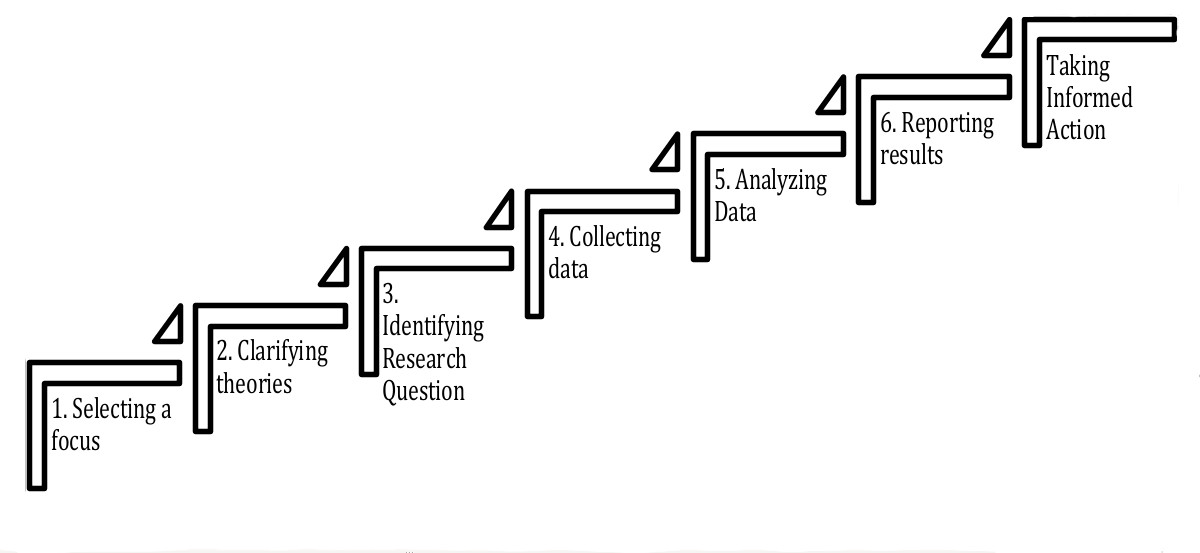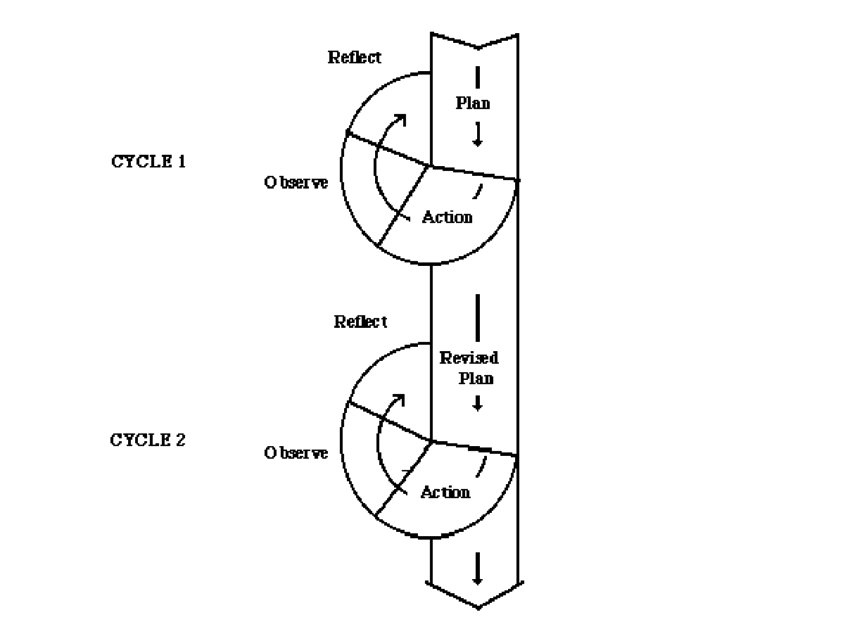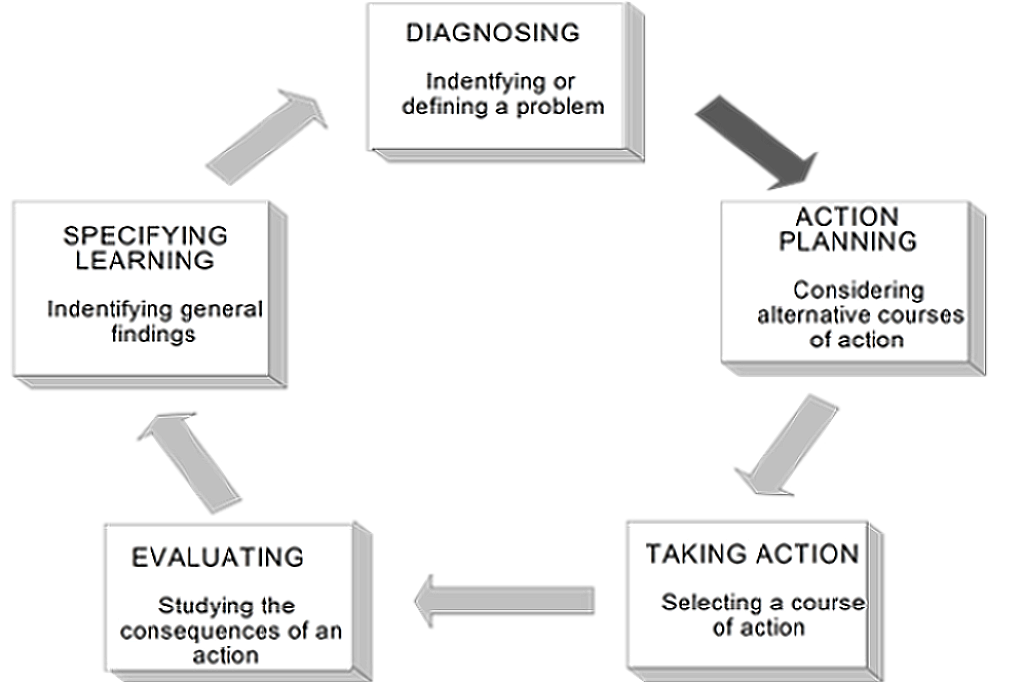Action Research
Action Research (AR) “is a disciplined process of inquiry conducted by and for those taking the action. The primary reason for engaging in action research is to assist the “actor” in improving and/or refining his or her actions.”1 There’s a dual goal in utilizing action research: to study a system and to collaborate with members of the system to change it towards a desirable direction.2 Action research is either research initiated to solve an immediate problem or a reflective process of progressive problem- solving led by individuals working with others in teams or as part of a “community of practice” to improve the way they address issues and solve problems. The diagram below specifies the seven steps to actions research process:

Selecting the focus involves asking what element(s) of a practice or what aspect of the student learning one wants to investigate. Clarifying theories involves identifying the values, beliefs, and theoretical perspectives the researchers hold relating to their focus. The third step pertains to the formulation of the research question that will guide the inquiry. Collecting and analyzing data are steps that must be taken considering validity and reliability concerns in research. In reporting results the reporter should present an understanding of the phenomenon investigated. This step can end up in producing grounded theory regarding what might be done to improve a situation. Results of an AR may be shared with peers in varied venues i.e., faculty meetings, seminars and conferences. Results of the inquiry are what inform action to be taken to deal with an identified problem. 3
As a reflective process of progressive problems, two models designed by proponents of AR are helpful. The first model is designed by Stephen Kemmis and involves four steps: 1. Plan 2. Act 3. Observe and 4. Reflect. Below is a graphic representation of the cyclical nature of the typical AR process:

Gerald Susman gives a more elaborate listing. His detailed action research model includes five phases, namely: diagnosing, action planning, taking action, evaluating, and specifying learning. In the last phase of the process, the problem is re-assessed and the process begins another cycle. This process is repeated until the problem is resolved. The diagram below illustrates Susman’s Detailed Action Research Model. 4


As an approach to learning, AR can be used in almost any field of practice. Academic research papers may adopt AR as a method of answering specific questions that are being asked in any field. Having AR as a component in an education program is a pragmatic and straightforward approach in equipping students to develop skills in dealing with and solving issues they encounter in their chosen field.

Reference List
1. Richard Sagor, Guiding School Improvement with Action Research (Alexandria, VA: Association for Supervision and Curriculum Development, 2000), 3, accessed July 13, 2018, http://www.questia.com/read/119456996/guiding-school-improvement-with-action-research.
2. Thomas Gilmore, Jim Krantz and Rafael Ramirez, "Action Based Modes of Inquiry and the Host-Researcher Relationship," Consultation 5.3 (Fall 1986): 161.
3. Richard Sagor, Guiding School Improvement with Action Research, (Alexandria, VA: Association for Supervision and Curriculum Development, 2000), 3-5, accessed July 11, 2018, http://www.questia.com/read/119456996/guiding-school-imp8,ovement-with-action-research
4. Robert Richardson, ed. “Overview of the Methodological Approach of Action Research” Theory and Practice of Action Research (2001), accessed July 13, 2018 https://youthsextion.files.wordpress.com/2011/04/14action-research.pdf .
